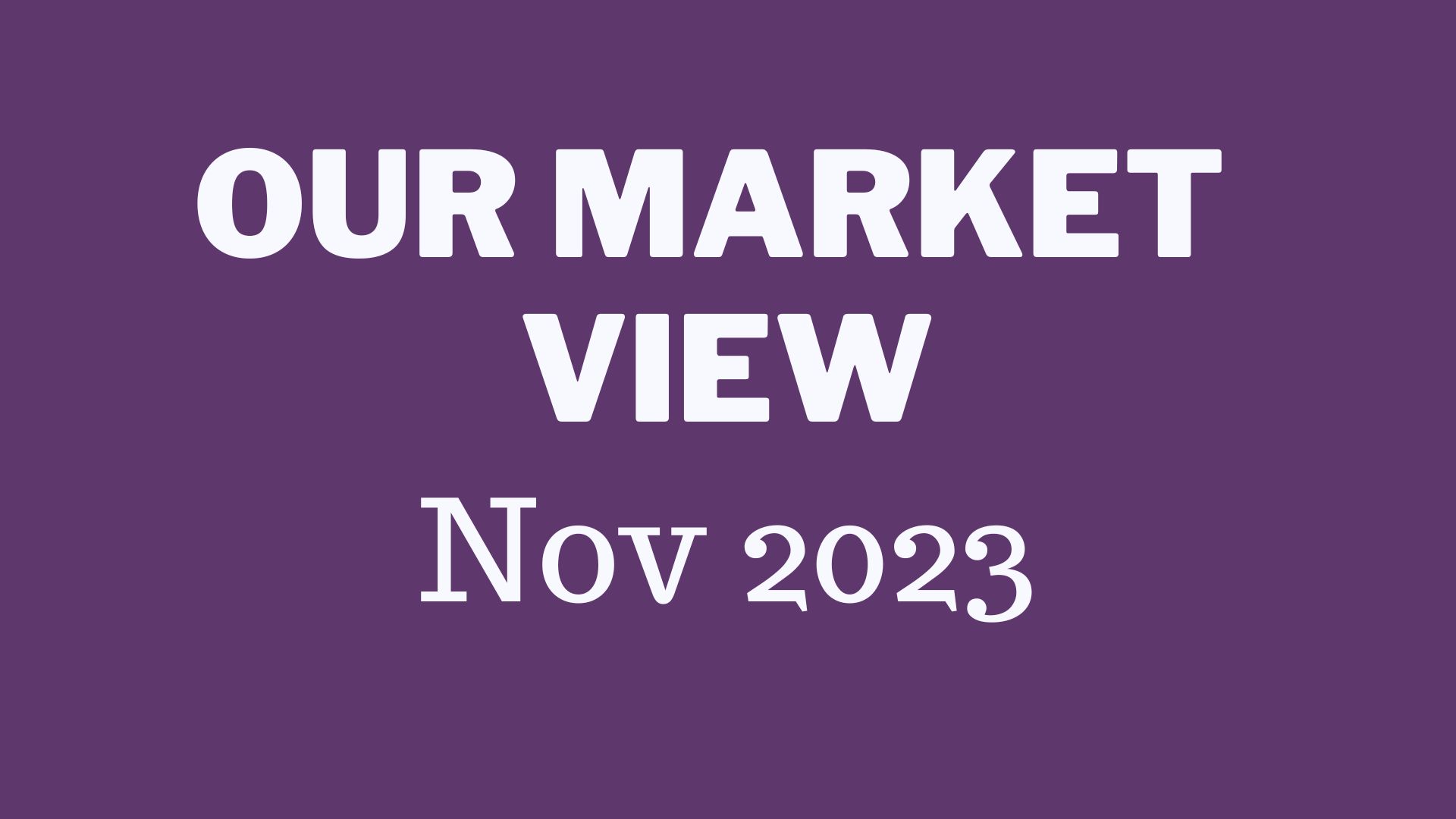October 2023 was a tough month for the equity markets. The correction which started in the second half of Sep 2023 continued. Nifty 50 declined by 2.8% and ended at 19080, Nifty midcap fell by an even greater 4.1% while Nifty Smallcap had a surprisingly milder fall of 0.9%.
The main reason was a major rise in geopolitical tension because of a series of coordinated attacks conducted by Hamas, from the Gaza strip onto bordering areas in Israel on Oct 7, 2023. Response from Israel was inevitable and this situation can last for a long time, peace may remain out of reach unless Hamas’s hold on power is broken. Israel’s generals think that they could be fighting Hamas for a year.
USD 10-year yields went up to 5%, Gold to 2000 USD per troy ounce, USD index reached 106 and Brent oil price was close to 93 USD per barrel. The view of higher USD interest rates prevailing for a longer time is even stronger and the Federal Reserve’s commitment to bringing inflation to 2% is steadfast. Gold goes up because of its safe haven status and any tension in the Middle East is an obvious reason for the rise in oil prices. USA equity markets weakened with all the major indices declining- DJIA, S& P 500, NASDAQ and Russell 2000.
However, during the current week, there is some recovery in the stock markets since the Fed did not raise rates in the FOMC meeting on Nov 1 and the non-farm payroll numbers declared on Nov 3 were slightly on the weaker side, both factors contributing to USD yields coming down slightly. Oil prices have also decreased after demand figures from USA and Europe came on the lower side.
Such global stress is not conducive to money flowing to the emerging markets and the present situation can last for quite some time. Therefore, the main question is whether the view for structural growth in India and the consequent beneficial impact on its equity markets is still intact. The widespread consensus is that the long-term economic progress in India and the equity uptrend will continue, though with episodic corrections. Indian recovery is based on 3 main factors of sound sustainable macro policies, continuing flows, and steady growth in corporate earnings. FII flows are undoubtedly volatile but domestic flows remain resilient and are actually increasing. Corporate earnings have grown at a good rate and those declared in October 2023 have been fairly good.
Indian midcaps and small caps have gone up considerably and the view since Sep 2023 is that there will be a rotation to large caps. In the correction in October 2023, in reality, everything went down with small caps showing more resilience. There is an exuberance in the midcap and smallcap segment and therefore it is prudent to exercise care and restraint and to invest only in high-quality stocks or schemes. However, the long-term upmove in India will continue to be broad-based since the domestic economy is a major driver in India and many sectors which are expected to do well currently might have only midcaps and small caps. Bernstein, Wall Street’s premier sell-side research and brokerage firm, has broadened its coverage of top Indian stocks from about 50 to almost 200.
Overall, for the medium-term goals (anything above 3 years), allocation to equities should remain on the higher side. Fresh money could be invested in tranches, utilizing the STP route- systematic transfer plan. Additionally, because of the broad-based nature of Indian growth, selected schemes should belong to categories, that allow easy movement from one cap to another, and a few examples are Large & Midcap, Multicap, Flexicap, and Focus. A significant risk factor continues to be higher USD interest rates, which makes equity not as attractive in relative terms. USA fiscal deficit is on the higher side, contributing to higher USD treasury yields, and Jamie Dimon, JPMorgan CEO, recently teased a worst-case scenario of 7% rates. Therefore, some allocation could also be to multi-asset schemes and these are available with advantageous equity taxation.
Also as always, with the global uncertainty, some part of the portfolio should always be invested in high-quality short-term debt funds to take care of liquidity and any contingencies. Similarly, for short-term goals, equities because of their volatile nature, should not be deployed. Equity savings schemes or balanced advantage schemes, because of their hybrid nature, may be utilized for goals with a time horizon of 2-3 years.






